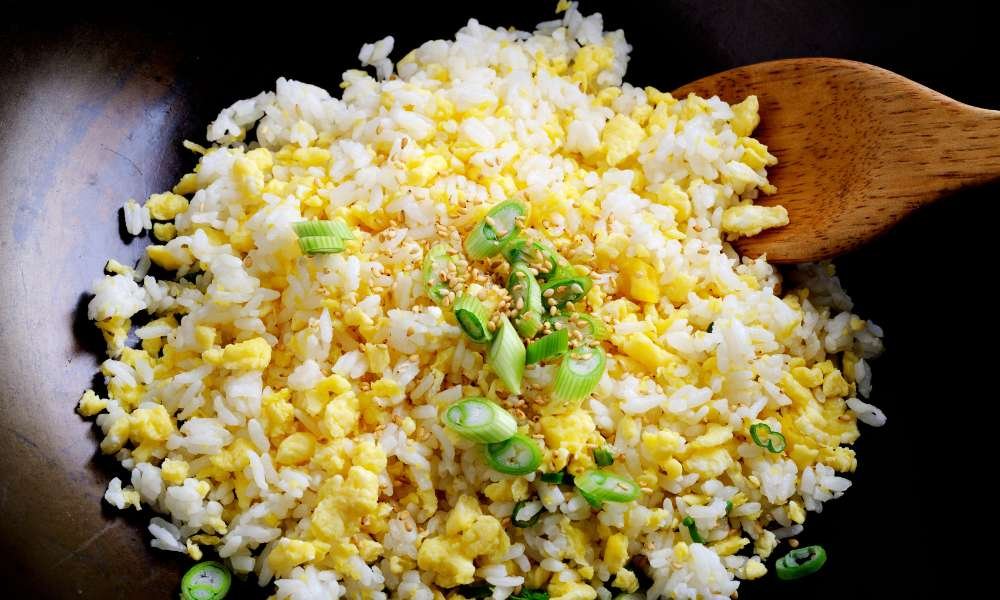Have you ever desired to know a way to make egg fried rice in a frying pan? You are in for a deal with! This cherished dish is a super combination of scrambled eggs, day-antique grains, and a aggregate of clean veggies or proteins. The splendor of cooking it in a frying pan lies in its simplicity — the extensive floor permits for even cooking, ensuing in a perfectly textured, flavorful meal. Whether you’re a amateur or an experienced cook dinner, studying to whip up egg fried rice in a frying pan is both amusing and profitable. Let’s dive into the stairs on the way to turn your kitchen into a stir-fry haven!
Why Making Egg-Fried in a Frying Pan is the Easiest Method
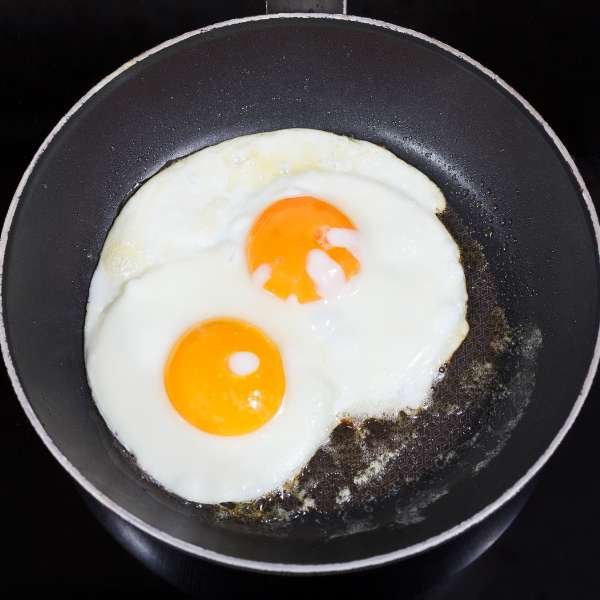
Frying an egg in a stainless steel pan may seem tricky at first, but once you master the technique, it becomes one of the easiest and most satisfying methods. Unlike non-stick pans, stainless steel offers superior heat distribution, ensuring that your eggs cook evenly with a delicious golden-brown edge. The key is to properly preheat the pan and use enough oil or butter to prevent sticking. This method is incredibly versatile, allowing you to fry eggs to your preferred consistency, whether you like them sunny-side up, over-easy, or with a perfectly runny yolk. With just a few simple steps, frying an egg in a stainless steel pan can quickly become your go-to kitchen trick for perfect eggs every time.
Grasping the Fundamentals of Egg-Fried
What is Egg-Fried?
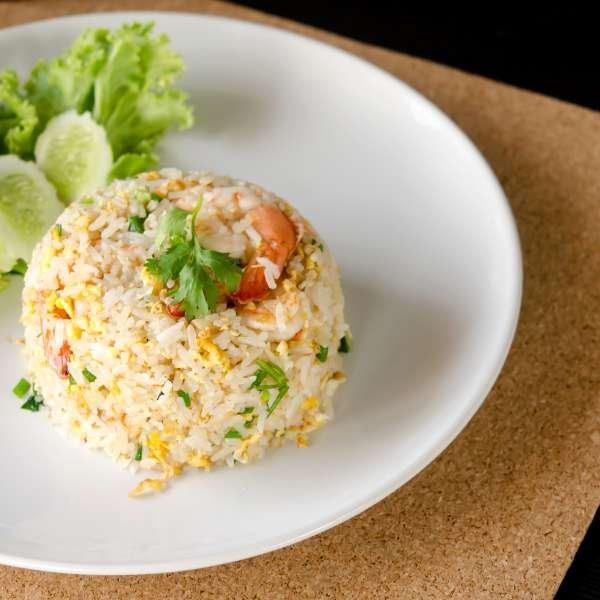
This dish hails from Chinese cuisine and is a comforting meal made with grains, scrambled eggs, and a variety of vegetables or meats. The magic of this dish lies in its simplicity—it’s a way to repurpose leftovers into something delectable. The golden eggs combine with firm, slightly chewy grains, producing a meal that satisfies with every bite.
Why a Frying Pan is Perfect for Beginners
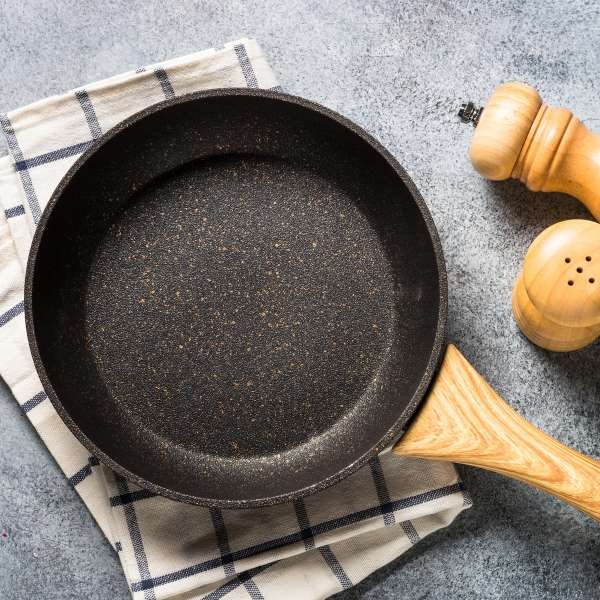
The frying pan’s wide, flat surface allows the grains to spread out, achieving that lightly crisped texture we crave. It also has enough depth to handle all your ingredients without making a mess. This makes it an approachable tool for anyone new to cooking while still delivering restaurant-worthy results.
Choosing the Right Ingredients
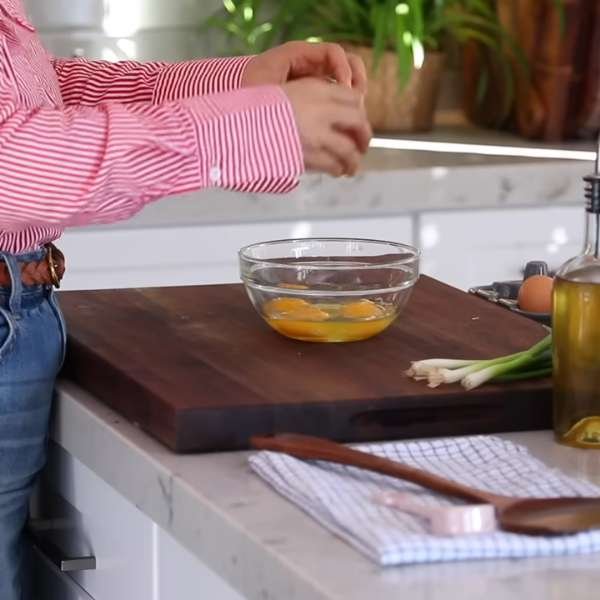
The Essential Ingredients for Egg-Fried
At its core, the dish needs just a few basic ingredients—cooked grains (day-old works best), eggs, oil, and soy sauce. Throw in aromatics like garlic, onions, or spring onions, and you’ve got the foundation of a flavorful meal. This minimalistic approach is what makes the egg-fried dish so beginner-friendly yet universally loved.
Optional Add-ins to Elevate Your Fried Dish
Looking to elevate your fried creation to new heights? Consider adding colorful vegetables like peas, carrots, and bell peppers. These add a sweet crunch and a nutritional boost. You could also throw in proteins such as shrimp, chicken, or tofu, or drizzle some sesame oil or oyster sauce for an extra punch of umami. These enhancements will elevate your dish without overwhelming its essential simplicity.
The Best Type of Grains for a Fried Dish
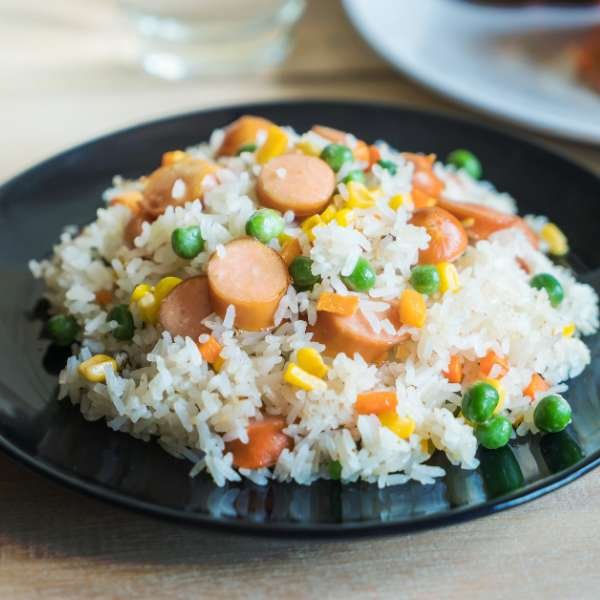
Why Day-Old Grains Are Key
The secret to a perfect fried meal? Day-old grains. Freshly cooked grains are too soft and sticky, which can result in clumps, while day-old grains are firmer and drier, allowing each grain to remain separate when fried. The texture is everything here—chewy with a slight crisp on the edges.
Can You Use Freshly Cooked Grains? Tips and Tricks
You only have freshly cooked grains, don’t worry—you can still make it work. Spread them on a tray and pop them into the fridge for about 20 minutes to cool them down. This step helps remove moisture, ensuring the grains won’t turn mushy when fried.
Preparing the Grains for the Frying Pan
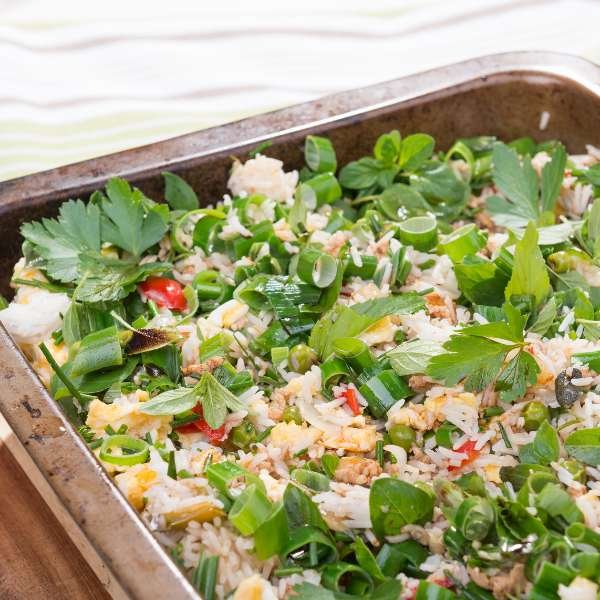
How to Properly Chill Grains for Frying
prepping grains in advance, transfer them to a wide dish and leave them uncovered in the fridge. This encourages quicker cooling and helps dry them, setting you up for a crispy, perfect fried dish.
Prepping Your Grains to Prevent Clumping
Break up any clumps in the cold grains with a fork before frying. This step ensures that the grains stay separated and absorb flavors evenly. A little prep here goes a long way in avoiding that dreaded clumpy texture.
Mastering the Art of Cooking Eggs
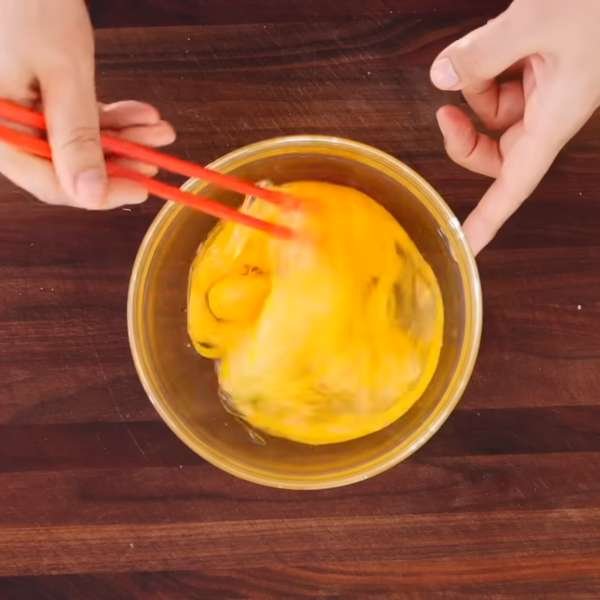
How to Get Fluffy Scrambled Eggs for Frying
To make the eggs light and fluffy, beat them thoroughly before pouring them into a hot, lightly oiled pan. Stir gently as they cook, forming soft curds. The eggs should be tender and moist, complementing the grains rather than overpowering them.
Should You Scramble the Eggs First or Last?
There’s a long-standing debate on this, but scrambling the eggs first is often the best way. Set them aside after cooking, then reincorporate them toward the end to maintain their fluffy texture.
Prepping Your Vegetables for Extra Flavor
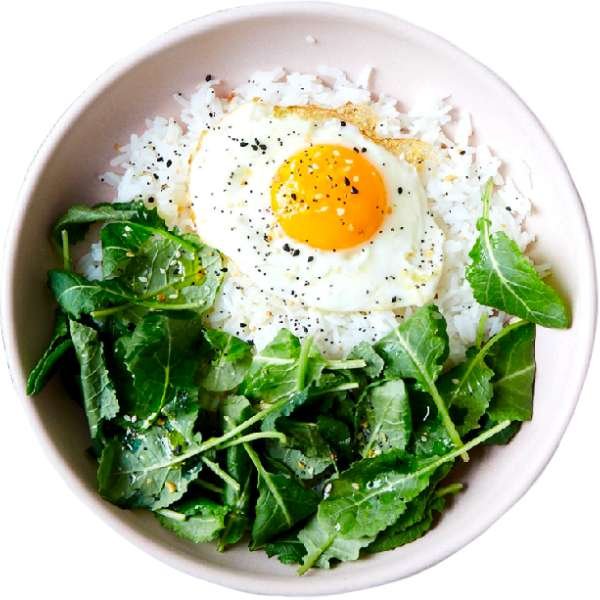
Simple Vegetables to Add to Fried Dishes
Vegetables brighten up your fried creation both visually and in flavor. Classic options like peas, carrots, and corn add a sweet crunch, while leafy greens like spinach or bok choy introduce freshness. Don’t be afraid to raid your fridge and get creative with your veggie selection!
How to Cut and Prepare Vegetables for Even Cooking
Uniformly chop your vegetables to ensure even cooking. Quick-cooking veggies like peas and corn can go straight into the pan, while heartier ones like carrots might need a brief sauté before being combined with the grains.
Using the Right Oil for Frying
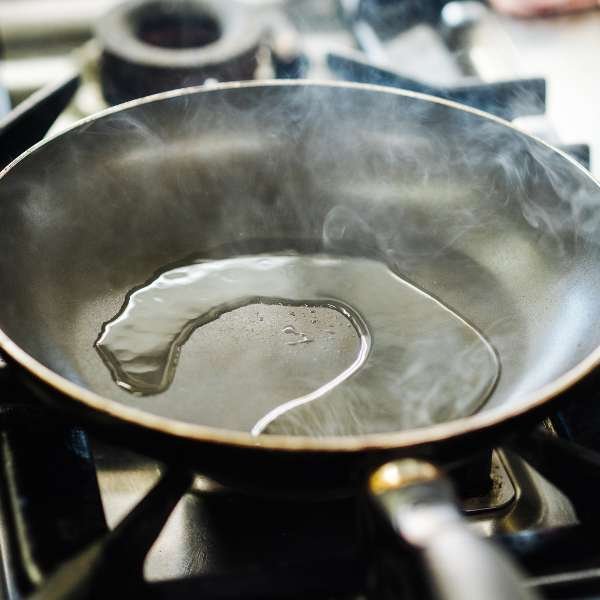
The Best Oils for Making Egg-Fried in a Frying Pan
Neutral oils like vegetable, canola, or peanut oil work best for egg-fried. These oils allow the flavors of your ingredients to take center stage. For a nutty aroma, add a dash of sesame oil at the very end.
Why You Should Avoid Using Too Much Oil
Less is more when it comes to oil. Use just enough to coat the pan lightly; too much oil will make your fried dish greasy, which can drown out its delightful textures and flavors.
Seasoning Your Egg-Fried
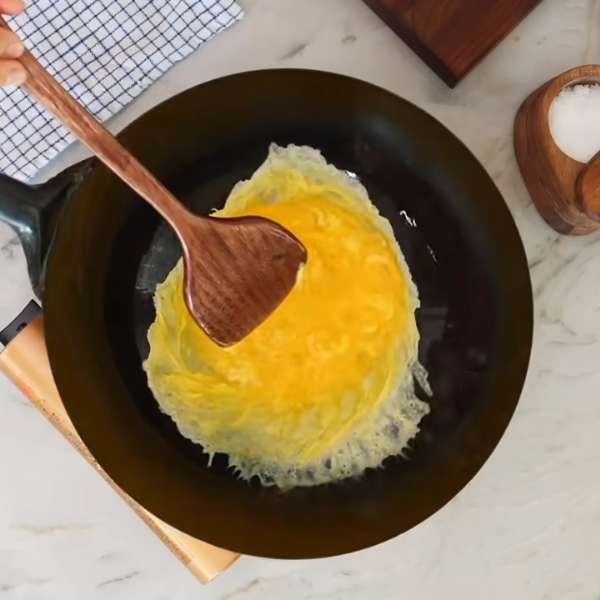
The Must-Have Seasonings for Authentic Egg-Fried
Soy sauce is essential, but don’t stop there—white pepper, salt, and a touch of Chinese five-spice powder can bring layers of complexity to your fried creation. Balance is key, so season in stages and adjust as needed.
Exploring Different Sauces: Soy, Oyster, and Beyond
Soy sauce lays the foundation for flavor, but oyster sauce adds depth and sweetness. Feeling adventurous? Add a bit of hoisin for a hint of sweetness or some chili oil for a spicy kick. These sauces can take your dish to unexpected flavor destinations.
Step-by-Step Guide to Making Egg-Fried in a Frying Pan
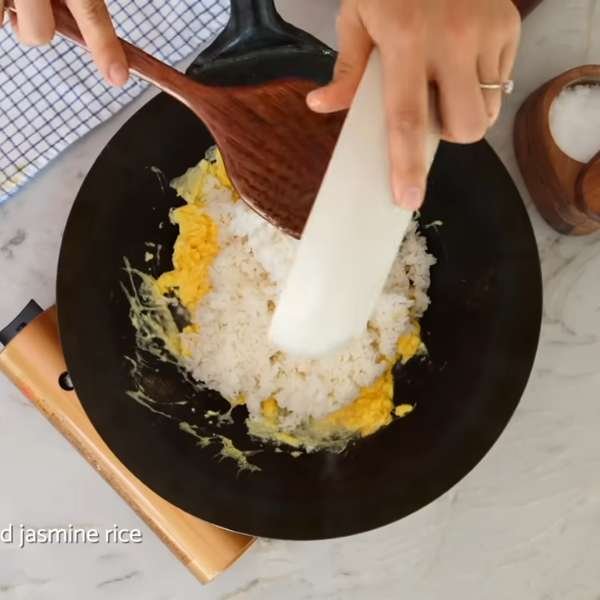
How to Heat the Frying Pan Properly
Preheat your frying pan over medium-high heat. The pan should be hot enough to sear the grains without burning them. This preheating step is crucial for achieving that signature crispiness.
The Perfect Order of Cooking: Grains, Eggs, and Veggies
Scramble the eggs first, then sauté the vegetables until tender. Finally, toss in the grains and combine everything together. Cooking in this order ensures each ingredient keeps its own texture and flavor.
Adding Protein to Your Egg-Fried
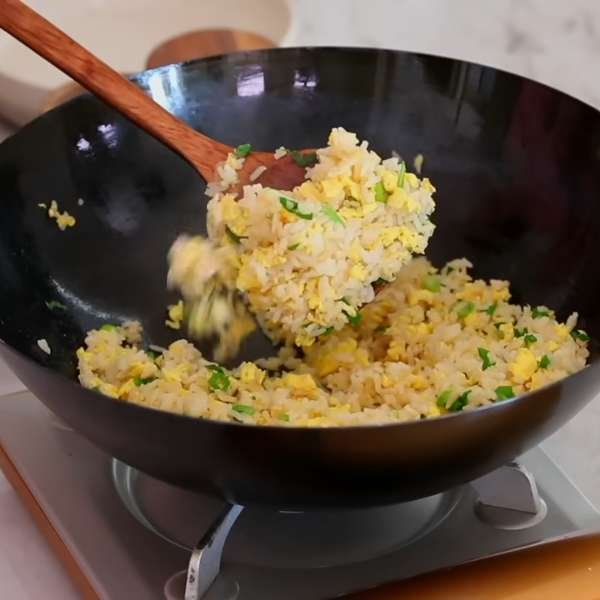
Chicken, Shrimp, or Tofu?
Chicken offers heartiness, shrimp adds a touch of elegance, and tofu absorbs the flavors beautifully. Pick your favorite, and be sure to cook it separately before adding it to the dish.
How to Cook Protein in the Same Pan without Overcrowding
Cook the protein in batches to avoid steaming rather than frying. This ensures it remains tender and flavorful. Once cooked, return it to the pan in the final stages of assembling the fried dish.
Creating the Perfect Texture
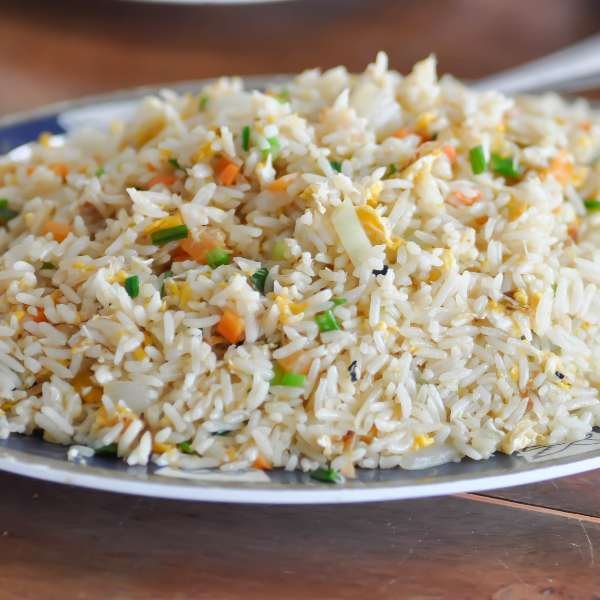
How to Achieve Crispy Grains Without Burning Them
For crispy grains, press them down into the pan and leave them undisturbed for a few minutes. Stir occasionally to prevent burning. This technique delivers that irresistible crunchy texture without compromising the dish.
Stir-Fry Techniques for Even Cooking
Constantly toss the ingredients with light, quick motions. Stir-frying keeps everything cooking evenly while infusing the grains with the rich flavors of the vegetables and seasonings.
Common Mistakes to Avoid
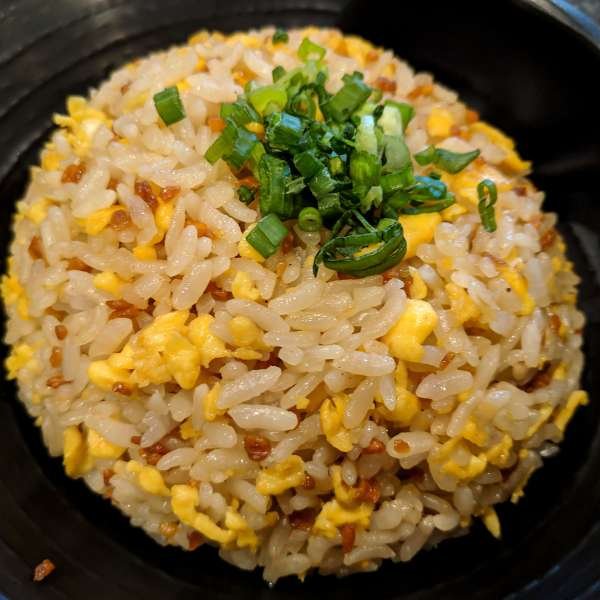
Overcrowding the Frying Pan: Why It Matters
Too many ingredients in the pan will steam the grains instead of frying them, leading to a mushy texture. Always give your ingredients room to breathe!
Avoiding Soggy Grains: The Importance of Heat Control
Low heat can cause soggy grains. Keep the heat high enough to evaporate excess moisture while cooking, and always preheat your pan before adding the grains.
How to Customize Your Egg-Fried
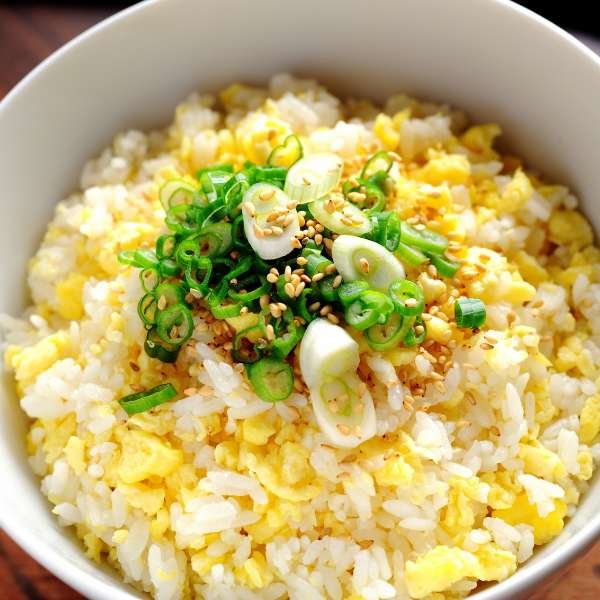
Spices and Seasonings for a Personal Twist
Experiment with spices like cumin or turmeric to add an unexpected twist to your egg stir-fry. These flavors can elevate the dish in exciting and unconventional ways.
Adding Nuts and Seeds for Crunch
For an extra crunch, toss in cashews, peanuts, or sesame seeds. These little additions create a delightful contrast with the softness of the grains and eggs.
Serving Your Egg-Fried
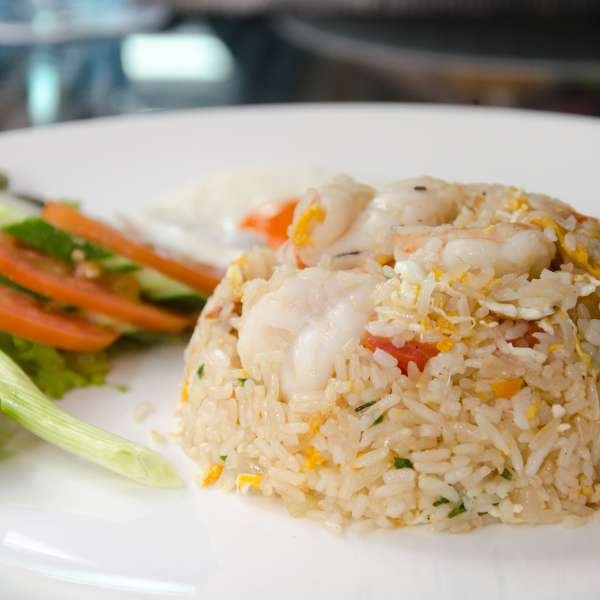
The Best Garnishes for a Professional Look
Top your egg stir-fry with chopped green onions, cilantro, or sesame seeds for a polished look. These garnishes not only add flavor but also make the dish more visually appealing.
Side Dishes to Pair with Egg-Fried
Egg stir-fry is satisfying on its own, but pairing it with steamed dumplings, spring rolls, or a simple cucumber salad can make your meal more complete and varied.
Storing and Reheating Leftovers
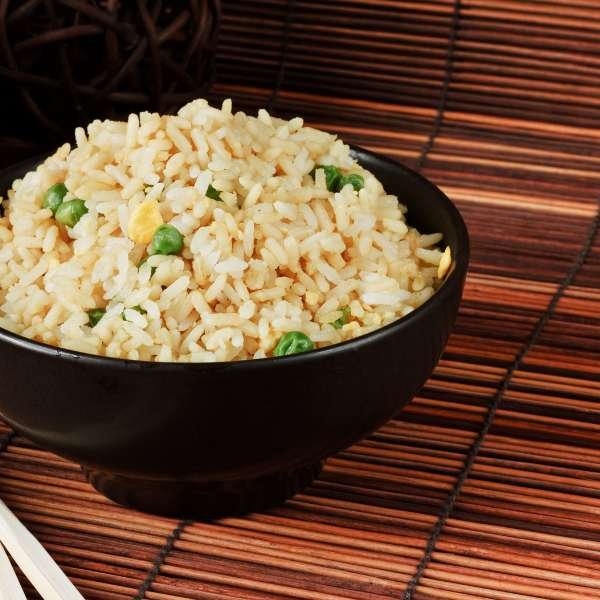
How to Properly Store Egg-Fried for Later
Store your leftovers in an airtight container in the fridge, but make sure the grains are completely cool before sealing to prevent condensation.
Reheating Tips to Keep Your Fried Dish Fresh
Reheat your dish in a frying pan or microwave, adding a splash of water to revive the texture. Stir gently to ensure even heating without drying it out.
Answering Common Questions

Can You Use Brown Grains or Quinoa Instead?
Absolutely! Brown grains add a hearty, nutty flavor, while quinoa offers a lighter, protein-rich alternative. Both options work beautifully, offering a different but equally satisfying experience.
Is It Possible to Make Egg-Fried Without Soy Sauce?
Yes, indeed! Try using tamari for a gluten-free option or coconut aminos for a soy-free alternative. Both bring a savory flavor without compromising on taste.
Making Egg-Fried in a Non-Stick Frying Pan vs. Cast Iron
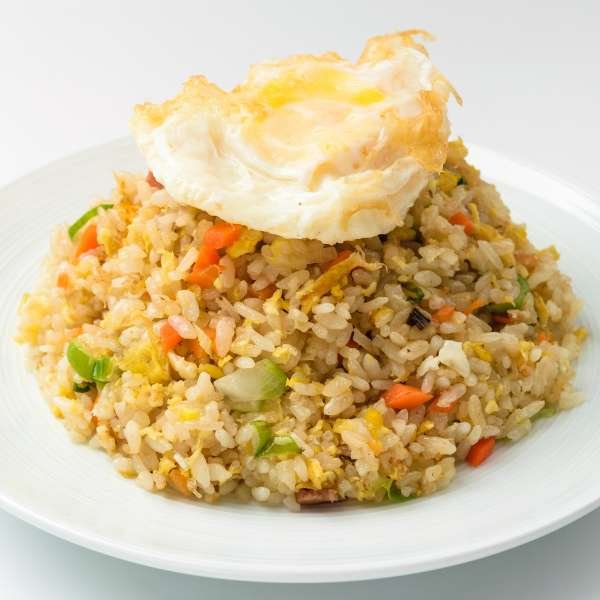
The Benefits of Each Frying Pan Type
A non-stick pan is more beginner-friendly, while a cast iron pan retains heat better, giving your dish that coveted crispy texture. Choose based on your skill level and the texture you want to achieve.
Which Pan is Easier for Beginners to Handle?For beginners, non-stick pans are generally easier to manage, but once you’re more comfortable, a cast iron pan can elevate your fried dish to crispy perfection.
Healthy Variations of Egg-Fried
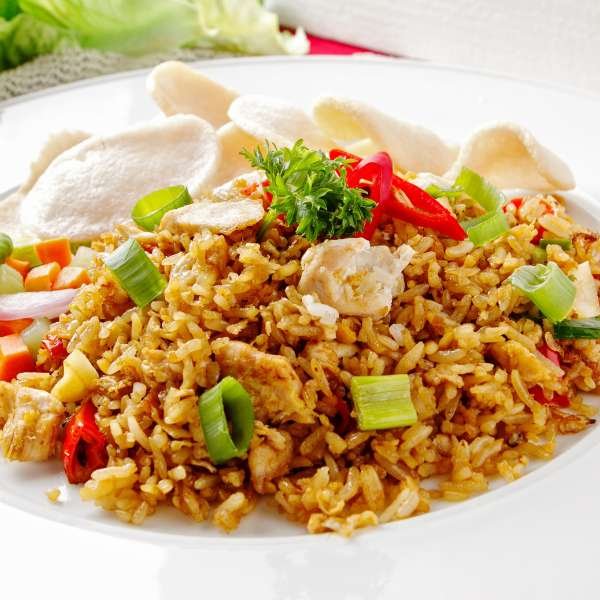
How to Make a Low-Sodium Version
To cut down on sodium, use low-sodium soy sauce or opt for tamari. Fresh herbs like cilantro or basil can also enhance the flavor without the need for extra salt.
Vegetarian and Vegan-Friendly Egg-Fried
For a vegan version, replace the eggs with tofu or chickpeas and use plant-based sauces. This keeps the dish hearty and flavorful while accommodating different dietary preferences.
Bringing It All Together
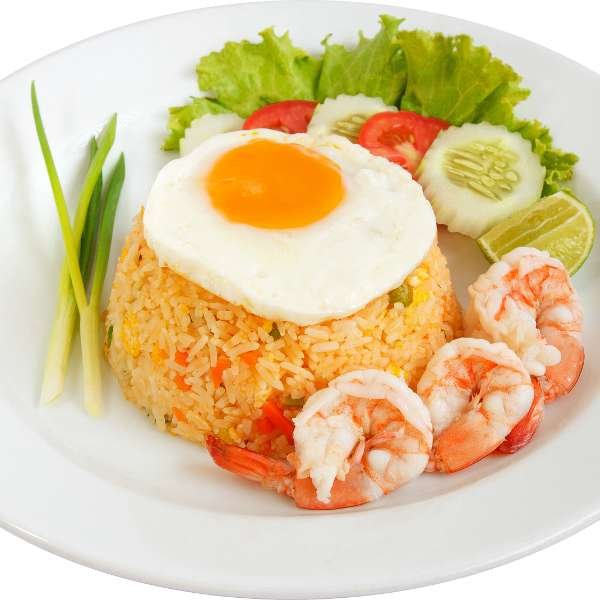
Quick Recap of the Steps to Make Egg-Fried in a Frying Pan
From selecting the right grains to mastering the art of scrambling eggs, making egg stir-fry in a frying pan involves perfecting a few simple techniques. It’s all about timing, balance, and using the right heat.
Final Tips for Mastering Egg-Fried Every Time
With practice, making egg stir-fry becomes second nature. Remember, day-old grains are your friend, keep your pan hot, and don’t overcrowd it. Soon, you’ll be able to whip up a batch of crispy, savory fried in no time!
Conclusion
Egg-fried is more than just a quick meal; it’s a versatile dish that adapts to your tastes and creativity. Whether you’re a beginner cook or a seasoned home chef, making egg stir-fry in a frying pan allows you to master a simple yet satisfying dish. By following a few key strategies—like using day-old grains, controlling your pan’s heat, and layering flavors—you can achieve a perfectly balanced meal. The beauty lies in its adaptability, allowing you to make it your own with a variety of add-ins and seasonings. Enjoy the process, and relish the rewarding flavors of this beloved dish! mood for something tasty and easy, grab your frying pan and give this egg fried rice recipe a try. You won’t be disappointed!

